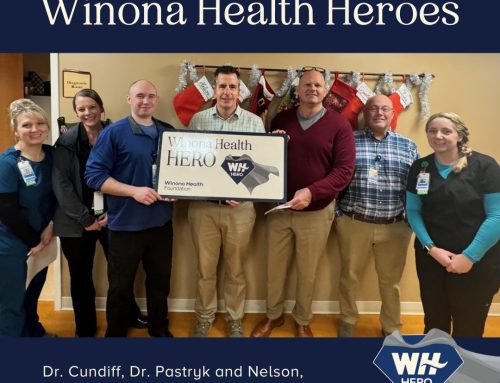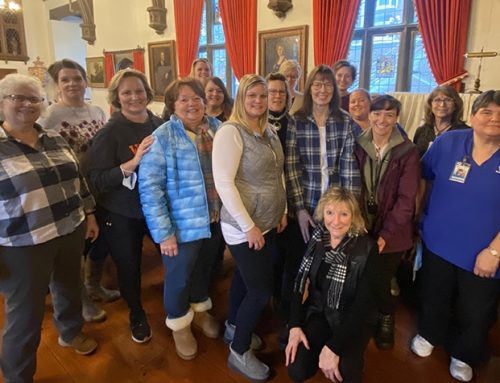Two new surveys highlight disconnect between reality and perception of eye injury risks.
What do a bungee cord, a pan of frying bacon and lawn-care chemicals have in common? They are just a few of the common items around the house that can cause eye injuries, which a study from the American Academy of Ophthalmology (Academy) and the American Society of Ocular Trauma (ASOT) reports are increasingly occurring at home. The Eye Injury Snapshot, a clinical survey of eye injuries across the U.S., found that nearly half of the 2.5 million eye injuries that Americans suffer annually now happen in and around the home in common places like the lawn, garden, kitchen or garage.
In an effort to combat the rate of household eye injuries, the Academy and ASOT have issued a new recommendation that every household in America have at least one pair of ANSI-approved* protective eyewear to be worn when doing projects and activities at home to safeguard against eye injuries.
The recommendation from the American Academy of Ophthalmology and ASOT comes as a new companion survey conducted on behalf of the Academy’s EyeSmart™ Campaign underscores the disconnect between the reality of eye injury risks and people’s perception of that risk. Most Americans think that eye injuries are a workplace phenomenon or related to events like Fourth of July fireworks displays. In fact, Americans are more likely to be injured in their homes from common everyday activities like mowing the lawn, cooking, cleaning and do-it-yourself home improvement projects that impact both participants and bystanders.
“Preventing an eye injury is much easier than treating one,” said Dr. Laurel Quinn of the Winona Health Eye Care Center. “Ninety percent of all eye injuries can be prevented by simply wearing protective eyewear. As the Fourth of July approaches, people are aware of the threat to the eyes that fireworks can represent, but they need to be equally aware of the everyday dangers that lurk in the home.”
The first of the two surveys, called the Eye Injury Snapshot (EIS), was conducted by the Academy, ASOT and 12 subspecialty societies. EIS presents a clinical “moment in time,” looking at eye injuries treated in the United States by ophthalmologists, emergency room physicians and pediatricians during a one-week period. 2008 marked the fifth year of the EIS. In 2008, there were 775 cases reported from all parts of the country. The survey found that:
- Nearly half of all eye injuries occur at home, with more than 40 percent happening during everyday activities like cooking, home repairs or yard work
- Men were more likely to be injured (74 percent) than women (26 percent)
- 78 percent of eye injuries occurred to individuals who were not wearing protective eyewear during the time of the injury.
- Nearly half of all injuries were to individuals between the ages of 18 and 45.
- Around the home, the majority of eye injuries occurred in the yard (39.4 percent), garage (11.8) and workshop (8.1 percent). Yet in-home locations, such as the kitchen, family room, bedroom and bathroom were also significant areas prone to injury, accounting for more than 34 percent of all eye injuries reported.
The companion public survey designed to measure Americans’ understanding of eye injuries found that most underestimate the risks of home eye injury, believing more eye injuries occur outside the home, such as at a construction site or factory or at special events such as Fourth of July fireworks. Fewer than one in five Americans believes that he or she is at even a moderate risk of eye injuries.
“Slipping on a pair of safety glasses is quick and easy. Unfortunately, compared to other common-sense safety steps, such as wearing seatbelts, using protective eyewear does not happen frequently enough,” Dr. Quinn said. “Sadly, the risk is not just confined to people doing the projects. Bystanders can also be injured and should take precautions against eye injuries as well.”
The EyeSmart public opinion survey, conducted by Greenberg, Quinlan, Rosner Research, also found that:
- Only 35 percent of Americans report that they always wear protective eyewear when performing home repairs or maintenance.
- Two-thirds of respondents said they own protective eyewear, but, of that group, 30 percent do not consistently wear the eye protection when doing home repairs or projects.
- Thirty-seven percent of those surveyed never or rarely wear protective lenses for repairs or maintenance, and nearly half (48 percent) report never wearing eyewear when playing sports.
“People seem to understand that you need safety glasses when using power tools, but the threat to your eyesight lurks even in basic home repairs and cleaning,” Dr. Quinn said. “People should use protective eyewear during any potentially hazardous tasks around the house, from cleaning your oven with a chemical cleaner to using bungee cords to hold items in place. In the event that you do suffer an eye injury, have an ophthalmologist examine the injury as soon as possible, even if the injury seems minor at first.”
The landscape of eye injuries in America has changed significantly since the 1990s, when the majority of eye injuries occurred in workplace settings. Today, due in part to improved safety measures, workplace injuries have fallen off, while a growing do-it-yourself attitude for home projects and increased falls among aging baby boomers may partially explain the increase in household injuries. Of the 2.5 million Americans who suffer from eye injuries each year, 50,000 experience significant vision loss from these injuries.
Additional information regarding eye injury prevention and treatment as well as executive summaries of both surveys can be found at www.geteyesmart.org.
ANSI-approved protective eyewear is manufactured to meet the American National Standards Institute (ANSI) eye protection standard. ANSI-approved protective eye wear can be easily purchased from most hardware stores nationwide and can be identified by the mark “Z87” placed on the eye wear. ANSI-approved protective eyewear is not approved for use in sports. To locate appropriate eyewear for specific sports talk to your ophthalmologist or visit www.geteyessmart.org.






